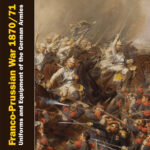World War One marked a significant turning point for women globally, propelling them into roles traditionally held by men. Among these crucial roles, nursing became exceptionally prominent, with thousands of women donning uniforms to serve on the front lines and in hospitals worldwide. The Ww1 Nurse Uniform is more than just clothing; it represents a pivotal moment in history, embodying the dedication, bravery, and evolving societal roles of women during wartime. These uniforms, while practical and functional, also became powerful symbols of service and sacrifice, deserving of closer examination and appreciation.
The outbreak of World War I necessitated a massive mobilization of medical personnel, and women stepped forward in unprecedented numbers to fill the ranks of nurses. Organizations like the Red Cross, the Army Nurse Corps, and the Navy Nurse Corps, alongside various voluntary aid detachments, recruited and deployed women across Europe and beyond. For these women, the uniform was an essential part of their identity and function. It provided practicality in demanding environments, fostered a sense of unity and purpose, and perhaps most importantly, commanded respect and recognition in a society still adjusting to women in professional and service-oriented roles.
The design of the WW1 nurse uniform was influenced by a blend of factors, including military styles, practical needs, and contemporary women’s fashion. While variations existed between different organizations and countries, certain core elements were consistently present. Typically, a WW1 nurse uniform consisted of a long dress or skirt and blouse combination, often made from durable, washable fabrics like cotton or linen. These were usually in muted colors such as grey, blue, or white, reflecting both practicality for laundering and a sense of professional modesty. Aprons, often white and starched, were a common feature, adding a layer of hygiene and visual distinction. Headwear was equally crucial, ranging from simple caps and veils to more structured bonnets or hats, often bearing insignia indicating the nurse’s organization or rank.
Image alt text: Diverse World War 1 women’s uniforms including Motor Division and Motor Corps Captain’s uniforms from the National League for Woman’s Service, alongside uniforms from the First National Service School and American Friends Service Committee, showcasing the variety of women’s roles and attire during the war.
Practicality was paramount in the design of the WW1 nurse uniform. Nurses worked in challenging and often unsanitary conditions, from muddy field hospitals to crowded hospital wards. Uniforms needed to be comfortable for long hours of work, allow for freedom of movement, and be easily cleaned. Features like buttoned cuffs, high necklines, and sturdy fabrics were not merely stylistic choices but functional necessities. Pockets were also essential for carrying medical instruments and supplies. The length of skirts and dresses, while adhering to the modesty standards of the time, was designed to be manageable in active environments, sometimes with slightly shorter hemlines than civilian fashion dictated.
Beyond practicality, the WW1 nurse uniform served a significant psychological and social purpose. For women venturing into war zones and professional medical roles, the uniform provided a sense of belonging and collective identity. Wearing a recognizable uniform fostered camaraderie among nurses and distinguished them as a vital group within the larger war effort. It boosted morale and instilled a sense of pride in their service. Furthermore, the uniform acted as a visual cue to soldiers and the public, immediately identifying these women as nurses and commanding a level of respect and authority that might not have been readily granted to women in civilian dress at the time.
Image alt text: American Red Cross World War 1 women’s uniforms, including the US Women Executives uniform, uniforms for Red Cross workers in France, and a Field Director’s uniform, highlighting the structured and professional attire of women in leadership and service roles within the Red Cross during wartime.
The influence of military aesthetics on the WW1 nurse uniform is undeniable. The structured jackets, belted waists, and sometimes even epaulettes seen in some nurse uniforms echoed the military uniforms worn by men. This borrowing of military style was not accidental. It served to legitimize women’s roles in the war effort by visually associating them with the discipline, order, and seriousness of the military. By adopting uniform styles that resonated with masculine military dress, women subtly challenged traditional gender roles and asserted their right to participate actively in national service. This visual alignment with military values was a powerful tool in the ongoing struggle for women’s suffrage and equal rights.
Different organizations adopted distinctive variations within the general style of the WW1 nurse uniform. The American Red Cross nurses, for instance, were known for their grey dresses, white aprons, and veils with the Red Cross emblem prominently displayed. The US Army Nurse Corps and Navy Nurse Corps had their own standardized uniforms, evolving over the course of the war, but generally featuring navy blue or white as primary colors, with specific insignia denoting rank and service branch. Voluntary organizations, while often adhering to a general nurse uniform aesthetic, might have had more localized or unique designs, reflecting their specific missions and affiliations.
Image alt text: A trio of World War 1 era women’s uniforms: a Motor Service Uniform and standard uniform from the American Fund for French Wounded (AFFW), alongside a War Camp Community Service Uniform, demonstrating the diverse organizations women supported and the corresponding uniforms that distinguished their service during the First World War.
The WW1 nurse uniform is not just a historical artifact; it is a tangible representation of the contributions women made during a global conflict. These uniforms silently speak of long hours, emotional strain, and the unwavering commitment to care for the sick and wounded. They embody a spirit of selflessness and resilience that transcended national boundaries. The image of women in their nurse uniforms became iconic, appearing in recruitment posters, propaganda materials, and countless photographs, solidifying their image as indispensable figures in the war effort.
Image alt text: Collection of World War 1 women’s uniforms from various service organizations: Overseas and US uniforms from the YMCA Woman’s Division, a YMCA Canteen Uniform, and an American Library Association Uniform, illustrating the wide spectrum of wartime roles women undertook and the uniforms associated with different service branches.
The legacy of the WW1 nurse uniform extends beyond the war itself. The widespread recognition of women’s wartime service, powerfully symbolized by their uniforms, significantly contributed to the momentum for women’s suffrage movements in many countries. The visible competence and dedication of nurses challenged pre-existing notions about women’s capabilities and their role in society. The professional standards established within nursing during WWI also had a lasting impact on the nursing profession, shaping training, organization, and the very image of a nurse in the decades that followed. The WW1 nurse uniform, therefore, stands as a powerful symbol of women’s empowerment, professionalization, and enduring contribution to both healthcare and society at large.
Image alt text: Three distinct World War 1 era women’s uniforms from the YWCA: a uniform of the First Vice President of the National War Work Council, an Overseas Uniform, and a US Uniform, showcasing the YWCA’s diverse levels of service and the corresponding variations in women’s uniforms during the Great War.
Image alt text: Group of World War 1 women’s service uniforms including a National Catholic War Council Uniform, a Canteen Uniform from the League of Catholic Women, and a Knights of Columbus Uniform, representing the contributions of Catholic women’s organizations and their uniformed volunteers to the war effort.
Image alt text: Four World War 1 women’s uniforms: Emergency Aid of Pennsylvania and Emergency Aid Aide Service of Pennsylvania uniforms, alongside a National League for Woman’s Service (NLWS) Uniform and the uniform of a 1st Lieutenant from the NLWS Junior Corps, demonstrating the range of volunteer organizations and levels of involvement for women during the war.
Image alt text: Salvation Army World War 1 women’s uniforms: a General’s Uniform, a US Uniform, and an Overseas Uniform, illustrating the Salvation Army’s uniformed women volunteers and their service both domestically and abroad during the First World War.
Image alt text: Collection of World War 1 women’s uniforms representing diverse roles: a Woman’s Land Army of America Uniform, a Chief Operator’s Uniform from the US Army Signal Corps Telephone Unit, and an Enlisted Woman’s Winter Field Uniform from the US Marine Corps, showcasing the breadth of women’s contributions to the war effort beyond nursing.
Image alt text: Four World War 1 US military women’s uniforms: Enlisted Woman’s Uniform and Enlisted Woman’s Summer Field Uniform from the US Marine Corps (USMC), and a Yeoman (F) Winter Uniform and Yeoman (F) Summer Uniform from the US Navy (USN), highlighting the early formal inclusion of women in US military branches and their distinct uniforms.
Image alt text: A trio of World War 1 US Navy women’s uniforms: a Chief Yeoman (F) Winter Uniform, a Blue Outdoor Uniform of the US Navy Nurse Corps (NNC), and a White Hospital Uniform of the US NNC, specifically showcasing different uniform types within the Navy Nurse Corps and the inclusion of women in naval service.
Image alt text: Three diverse World War 1 women’s uniforms: an Emergency Fleet Corporation Uniform from the US Shipping Board, a Jewish Welfare Board Uniform, and a French Red Cross Uniform, representing a range of wartime support services and international organizations where women played crucial roles in uniform.
Image alt text: Selection of World War 1 US Army women’s uniforms: a Contract Surgeon Uniform, a US Army Nurse Corps (ANC) Uniform, a US ANC Overcoat, and another US ANC Uniform, focusing on the variety of garments and roles within the Army Nurse Corps and medical services during the war.
Image alt text: Three World War 1 women’s agricultural service uniforms: a Uniform of the Woman’s Land Army of Hamilton County, Ohio, a Canteen Captain’s Uniform, and a National Land Army of Ohio Uniform, showcasing the contributions of women in agriculture and food services during wartime labor shortages.
Image alt text: Collection of World War 1 women’s uniforms related to hospital and aid services: a Uniform of Matrons in US Convalescent Hospitals from the American Red Cross, an Emergency Canteen Service Uniform, and a Nurse’s Aide Uniform from the University of Pennsylvania Hospital, highlighting the diverse support roles women filled in medical and relief efforts.
Image alt text: Second view of World War 1 women’s uniforms for hospital and aid services: a Uniform of Matrons in US Convalescent Hospitals from the American Red Cross, an Emergency Canteen Service Uniform, and a Nurse’s Aide Uniform from the University of Pennsylvania Hospital, emphasizing the variety of uniforms within medical support roles.
Image alt text: American Red Cross World War 1 women’s medical uniforms: a Nurse’s Outdoor Uniform, a Nurse’s Ward Uniform, and a Dietitian’s Uniform, illustrating the specialized uniforms for different functions within Red Cross medical services during the war.
Image alt text: Four American Red Cross World War 1 women’s uniforms for transportation and foreign service roles: Motor Corps Driver’s Uniforms (including an overcoat), and a Foreign Service Uniform, demonstrating the diverse roles women undertook within the Red Cross, from transportation to international aid, all while wearing distinct uniforms.


